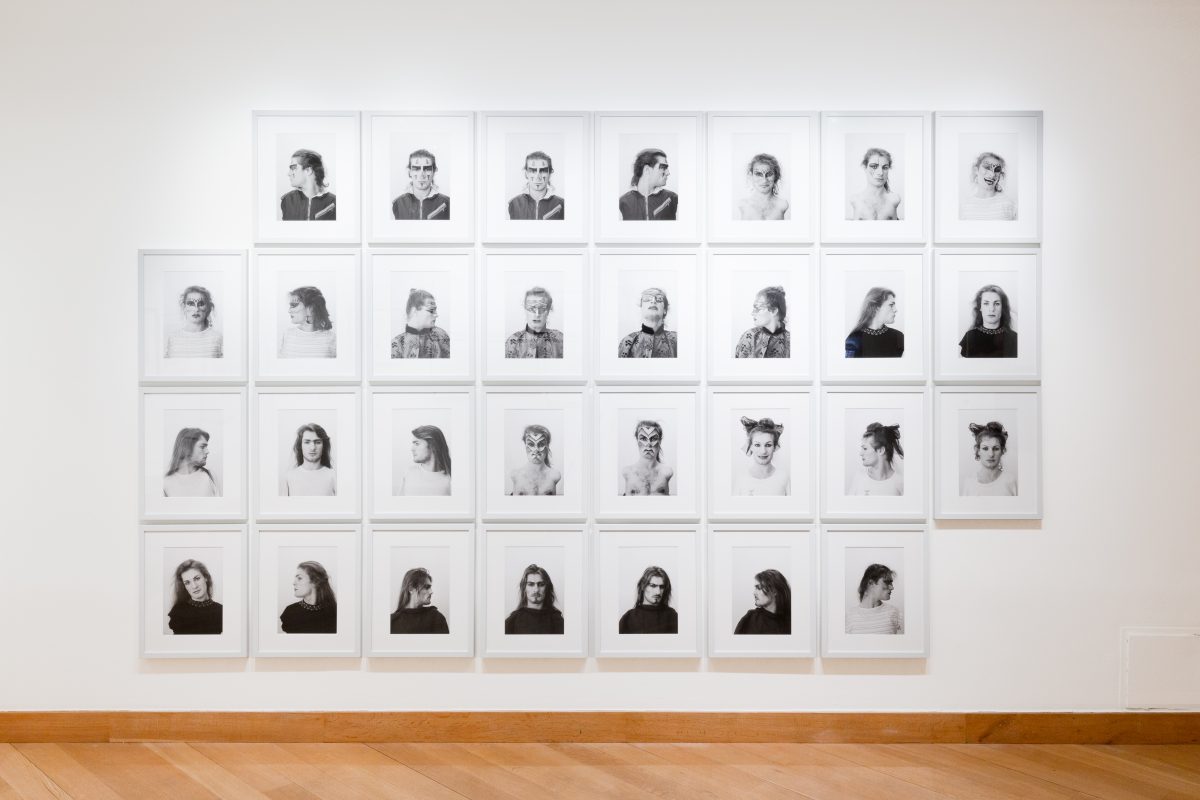
From the early days of her childhood in Chile, the transgender artist Lorenza Böttner* had an eye for beauty; she was particularly drawn to birds, fascinated by their lightness and freedom. One day, as the eight-year-old Lorenza was walking to school, she noticed feathers falling from a nest tucked in an electric pylon overhead. Wanting to see the hatchlings for herself, she climbed up the pylon but was startled by the sudden flight of a bird, which caused her to fall and be severely electrocuted. When faced with the awful burden of not knowing whether her child would survive the accident, Böttner’s mother fought hard to provide her with the best medical care available, arguing that if there was “just an ear left on [her] body” then it was worth it. Lorenza lived but lost both of her arms.
Despite the innumerable obstacles she faced after being institutionalized for treatment in her parents’ native Germany, Böttner rejected “disability education” and instead chose to attend art school at the Kunsthochschule Kassel. (While there, she began publicly identifying as female, but maintained a fluid gender identity and pronouns for the rest of her life.) Thus began her remarkable career as an artist, the fruits of which can be seen in her first-ever United States exhibition at the Leslie-Lohman Museum of Art.

Böttner, who made art using her mouth and feet, developed an impressive, multidisciplinary body of work that spans painting, photography, performance art, drawing, and dance. An untitled pastel drawing that depicts the artist in three different modes of dresshangs at the start of the exhibition, as if to assert her multiplicity. The leftmost Lorenza poses in a classically feminine, almost Victorian style, complete with lipstick and a painted-on beauty mark; at the same time, her low-cut dress reveals an abundance of chest hair, a tacit refusal to conform her body to the binary norm. To her right, we see the artist with long, braided hair in a more gender-neutral outfit, while the rightmost figure presents as classically masculine, sporting a full suit and facial hair. Here, Böttner doesn’t just place herself on a spectrum — she is the spectrum. In this piece, gender is not an ossified final destination, nor is transness a straight vector; Böttner seems to insist that the self can inhabit the body in multiple and diverse ways, none of which are mutually exclusive. It is a liberating perspective.
Böttner herself eluded classification in seemingly every area of her life:s She was seen as a German in Chile, but Chilean in Germany; her education meant that she wasn’t an outsider artist, but due to her disability and transness, she was hardly welcomed as an “insider” either. In her photo series Face Art (1983), Böttner channels the ever-influential work of Bernd and Hilla Becher, whose œuvre inspired an entire generation of photographers to reimagine their typologies within the context of the self. The series documents Böttner moving between identities, trying on and taking off various gender signifiers. She distorts her features with paint and maps out the various angles of her face, demonstrating a clear aesthetic kinship with the work of Janice Guy, another Becher protégée whose late-1970s self-portraiture recently made waves at the Independent Art Fair.

Other works in the show suggest a wide range of influences, from Tom of Finland to the “Venus de Milo.” Böttner’s more homoerotic works on paper from the 1970s employ the round, sensual lines and exaggerated physical traits that were the hallmark of Finland’s illustrations. By contrast, one haunting untitled work from 1985 shows a crowded street from Böttner’s perspective: men and women alike stare openly at the viewer, their faces betraying expressions of surprise and even fear. The angularity and coloring of the figures recalls that of painting from 1920s and ’30s Weimar Germany, the work of Otto Dix in particular. Böttner, used to being treated as a spectacle, stated that such attention did not bother her: “I like to open people’s eyes and show them how stupid it is to hide behind a bourgeois façade,” she once said. Her 1987 performance as the “Venus de Milo” in New York — one of the conceptual highlights of the current show — epitomizes this approach. She asks: Why are Greek statues that have lost their limbs seen as equally, if not more, beautiful, while actual human bodies are discriminated against and pushed to wear prosthetics, even if it is against their own wishes?
Böttner was a fascinating, complex figure whose life was tragically cut short in 1994 due to AIDS-related complications. In keeping with her indomitable will, she continued to make art until the very end: she made some of the last works in the show while in hospice care, drawing a portrait and a bouquet of flowers in marker on hospital napkins. Despite their complicated relationship, Böttner’s mother preserved her archive after her death, saving her from the fate of countless queer artists whose work has been lost to history or intentionally erased by their next of kin. We are lucky that Lorenza Böttner’s work and her enduring spirit live on.

*Although Lorenza Böttner continued to use her birth name and pronouns from time to time over the course of her life, this article mirrors the Leslie-Lohman Museum’s decision to refer to Böttner by her chosen name, which is a variation of the middle name she was given at birth.
Lorenza Böttner: Requiem for the Norm continues at the Leslie-Lohman Museum of Art (26 Wooster Street, Soho, Manhattan) through August 14. The exhibition was curated by Paul B. Preciado.
0 Commentaires